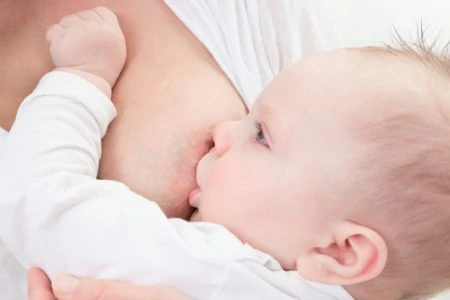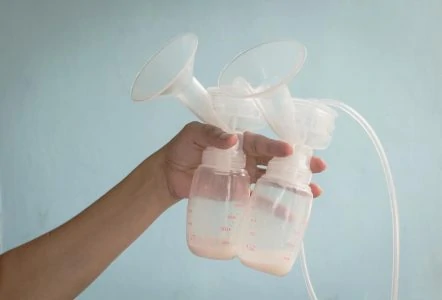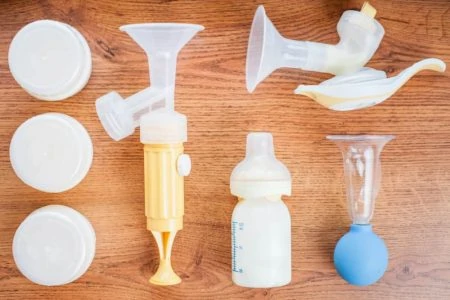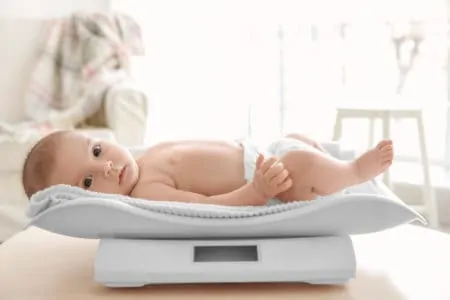Are you suffering from itchy, painful nipples while breastfeeding?
You’re in good company — thousands of other moms are going through the same thing. We’ve experienced it too.
Breastfeeding can be an amazing, emotional bonding experience with your baby, but uncomfortable side effects and problems may make this more of a chore than a beautiful connection.
If you’re experiencing itchy breasts during breastfeeding, we can help. In this article, we’ll discuss the possible causes of your discomfort and offer practical solutions to help you feel better fast. Ridding yourself of breastfeeding irritations can help your baby have a better latch, a healthier meal, and give you the comfort you deserve.
Key Takeaways
- Itchy breasts during breastfeeding can be caused by dry skin, infections, poor latch, or stretchy skin.
- To alleviate itching, take care of your breasts, practice skin-to-skin contact, and seek help from a lactation consultant.
- Infections like thrush, mastitis, or dermatitis can also cause itchiness; consult a doctor for proper diagnosis and treatment.
- Breastfeeding itchiness usually subsides after the first two weeks, but if it persists, consider pumping breast milk as an alternative.
Causes of Breastfeeding Itchiness
Let’s look at what might be causing your itchiness and irritation. These are the likeliest culprits.
1. Dry Skin
Unfortunately, sore breasts and breastfeeding sometimes go hand-in-hand. From milk let-down to constant stimulation, those with sensitive nipples may have a higher chance for obstacles like itchy breasts. The most challenging time for breastfeeding moms is the first few days of nursing, especially if you’re a first-time mom.
Just like your lips when they get chapped, your nipples can suffer from excessive wetness and dry air, too. Your baby spends a lot of time on the breast, but when they’re away, your skin may be drying out. This can cause cracking, which leads to itchy sensations.
Some babies have a powerful suck, even from the start. If this is the case, your nipple is going through constant tugging.
For moms who aren’t used to this, it can cause minor nipple damage. The good news is this should only last for a couple of weeks.
2. Infections
This is the part everyone worries about. When your nipples crack open, it allows for more chances for bacteria to sneak in and cause infections. For example, thrush (or a yeast infection) can be the source of your itchy breasts.
Perform a quick self-examination, and think about when you’re experiencing itchiness the most. If your nipples have a pink appearance or you feel the itchiness most frequently while breastfeeding or directly after, you may be suffering from thrush or a different infection (1).
3. Poor Latch
If your symptoms have occurred for the past 10 days, you may have more than just sensitive nipples. Your baby may be having trouble getting a good latch on your breast.
It’s an issue many moms face, including me. If your baby isn’t opening their mouth wide enough and is narrowly latching to just the nipple, all of that stress on your breasts focuses directly on your nipple. That’s why a good latch is important!
If your baby’s lips are spread out around your breast like a fish, the latch is good (2).
4. Stretchy Skin
When I was pregnant, I got stretch marks everywhere, even on my breasts. One thing I wasn’t expecting to experience was my skin becoming almost unbearably itchy as it stretched!
Breasts are continually filling and emptying again and again. That continuous change in your breasts, which are working very hard, can cause additional problems.
Once I started treating my breasts the same as my tummy and hips, I felt less itchiness.
Take Note
Watch for an allergic reaction to any creams you use. And keep in mind your baby’s mouth goes there — so you may want to use a moisturizer that’s safe to ingest, like olive oil or coconut oil.
Editor's Note:
Michelle Roth, BA, IBCLC5. Blocked Ducts
Though sharp pain is usually the main identifier for blocked milk ducts, itchiness may be another symptom. If you’re experiencing pain with the urge to scratch and you can feel lumps in your breasts, you most likely have a blocked milk duct.
These are a common problem for breastfeeding moms, and it’s important you continue breastfeeding. Your baby will be safe even if an infection is involved because your milk is packed with antibodies that prevent anything from getting your baby sick (3).
Relieving a blocked duct can be done with warm showers or compresses, plenty of massaging, and frequent breastfeeding.
The symptoms should clear up within a couple of days. If they don’t, you’re at a higher risk of the duct becoming infected, and you should see a doctor. You might need an antibiotic to knock out the infection.
Solving the Problem
Getting to the bottom of what is affecting your breastfeeding experience is the first step. But the next is just as important — fixing whatever is making this an itchy, painful chore. Don’t give up on breastfeeding just yet!
Around the two-week mark, many women start feeling defeated, especially if they’ve been battling itchy, sore nipples from dry skin or cracking. It’s worse if you’re suffering from infection or other more serious complications.
Feeling alone and helpless is entirely normal, but it doesn’t have to be the end of the road for you and your baby and this amazing choice to breastfeed.
Sensitive nipples, poor latches, and dry skin can all be solved without a doctor’s help, but it’s always a good idea to have someone you trust to talk with about your issues.
These are some of the ways you can help solve minor breastfeeding problems that are causing your itching:
- Take care of your breasts at all times: Even when your baby isn’t feeding. Many products are available to help soothe itchy and sore breasts.
- Skin-to-skin contact: Encourage a better latch and relax with direct contact with your baby. It helps create a closer bond and gives your baby a better feeding time.
- Keep a breastfeeding log: It’s a good idea to document when your itchiness occurs, what you did to attempt to solve it, and how your baby reacts. That way, you’ll have something to reference.
- Practice makes perfect: If your baby is struggling with properly latching on, continue to work on it with them. If positioning is a problem, a nursing pillow may help.
- Seek the help of a lactation consultant: Talking to someone knowledgeable about breastfeeding problems can be a game-changer when you’re suffering from soreness. A lactation consultant will take a detailed health history to help you narrow down what might be causing your discomfort.
What if It’s an Infection?
If you suspect an infection is the reason behind your itchiness, let’s look at how you should handle it.
1. Thrush
This is one of the more complicated issues new moms face while breastfeeding. Thrush is a fungal yeast infection often passed from the baby to its mother (4). It’s a tricky infection to get rid of because, as you breastfeed, you and your baby can pass the infection back and forth.
A doctor can identify thrush, but if you see white or yellow patches in your baby’s mouth that don’t wipe off, that’s a good sign your baby is suffering from it. The good news is that thrush isn’t dangerous, just annoying and exhausting for mom and baby and painful if left untreated.
Antibiotics can cause thrush in infants, as can their exposure to yeast during birth (5). Treating thrush can take about two weeks and can be done with prescription antifungal creams and oral medications for you both. If your itchiness is too much to handle, try ice packs against your breasts to help numb the sensation.
2. Mastitis
Up to 3% of breastfeeding moms suffer from mastitis (6). Any bacteria from your baby’s mouth or your environment can enter your body through cracks in the nipple — the same way thrush spreads. The difference here is that mastitis is a breast tissue infection while thrush remains in the nipple.
Moms with mastitis often suffer from fevers and other flu-like symptoms. This is less common with thrush, but both cause nipple and breast pain and may cause extreme itching.
Resting, massaging your breasts, and taking doctor-approved painkillers can help you treat mastitis at home. Cold or warm compresses can help with itching, too. Avoiding bras or tight shirts and breastfeeding as much as possible will help relieve symptoms faster (7).
3. Dermatitis
I didn’t realize how sensitive I would be to everything after having a child. There were hundreds of products to try, and I wanted to give everything a shot.
Unfortunately, putting new products on your breasts, which are already going through a lot while breastfeeding, is a great way to cause an allergic reaction or worsen existing problems.
Red, itchy rash patches on your breasts and nipples may result from dermatitis. Another variation of this is eczema.
Both are uncomfortable and uncontrollably itchy and manifest in raw, painful patches.
Is It Dermatitis Or Eczema?
The most important thing to do is figure out what is irritating your skin. There are many kinds of dermatitis, but if it only appeared while breastfeeding, you can try to eliminate new products you’ve been using and see if the itchy rash clears up. If not, you may need to see a doctor.
Inflammatory breast cancer and Paget’s disease are rare conditions that can also cause breast itchiness but are typically accompanied by other symptoms as well. Working closely with your health care provider will help rule out these serious, though rare, conditions.
Editor's Note:
Michelle Roth, BA, IBCLCDoes It Ever Get Better?
I couldn’t tell you how many times I wondered this myself. Late nights, early morning, no sleep, itchy breasts, fussy babies — it all seems impossible, especially during that first month. I sometimes wanted to cry because I was convinced breastfeeding wasn’t going to work out.
The good news? I made it, and so can you! Many new moms struggle with breastfeeding, and itchiness can be one of the worst problems you come across. It’s almost maddening, but it’s controllable.
Pay attention to your baby, your body, and the products you’re using. I know how hard it is to be alert when you’re running on no sleep, but the relief is worth it. The best thing to remember is the majority of breastfeeding itchiness subsides after the first two weeks.
However, if you’ve tried everything, and nothing seems to help, and it’s so bad you’re entertaining the idea of quitting breastfeeding altogether, there are some options. You can always pump your breast milk and feed it to your baby in a bottle. To do this, look for a good bottle for breastfed babies. It’s better than quitting entirely, and it will provide your nipples with some relief, though for some moms, pumping causes its own set of challenges.
You should also work closely with a lactation consultant to ensure you are pumping often enough to maintain your milk supply. A lactation consultant may also be able to help you resolve the itchiness you’re experiencing.








